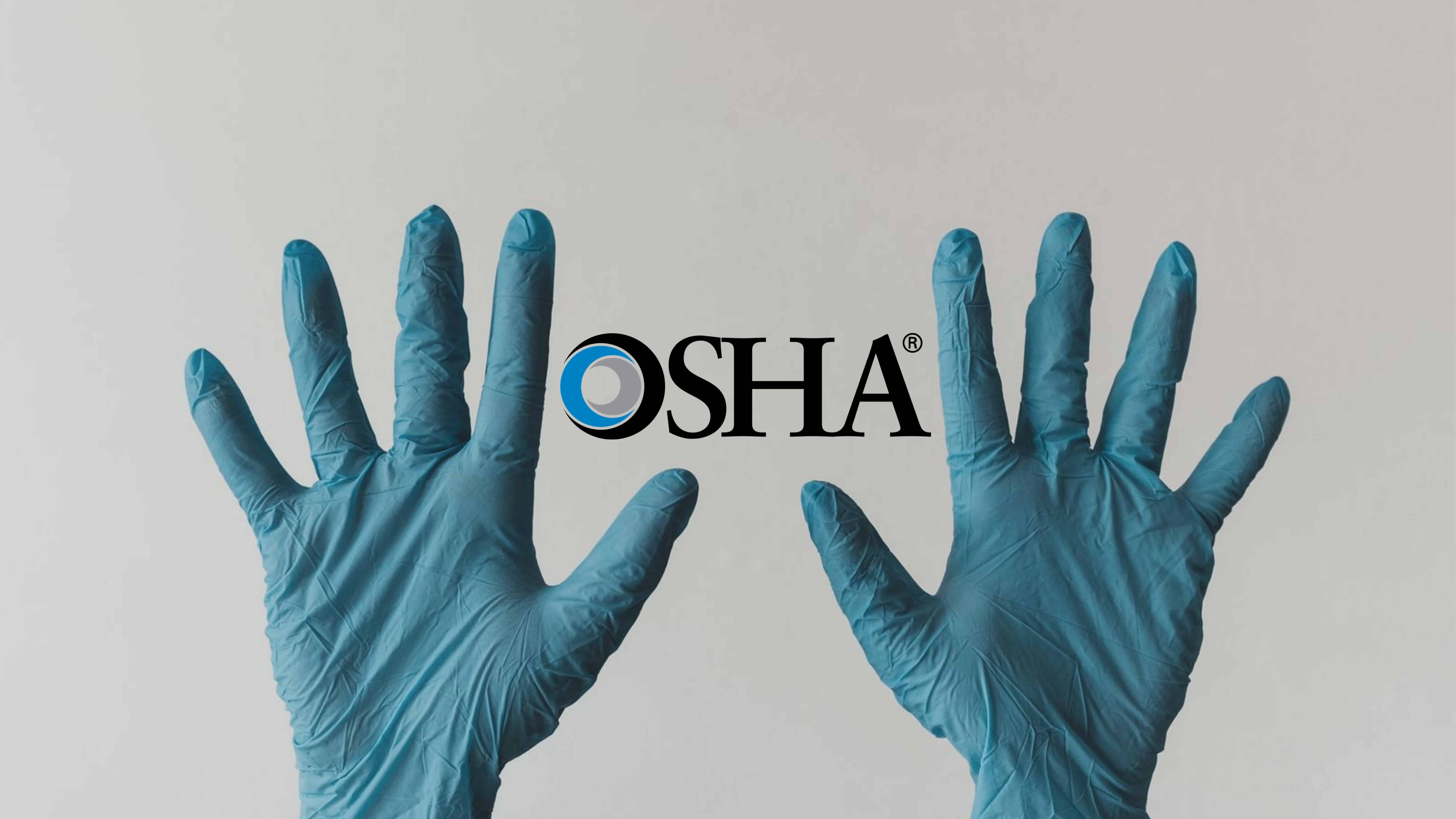What are Some Common OSHA Violations in Healthcare?
The Occupational Safety and Health Act (OSHA) sets safety standards. These standards, which workplaces adhere to, include the Bloodborne Pathogens Standard, the Hazard Communication standard, and many more.
A standard consists of a series of regulations describing what safety measures an organization must take, how it must train workers, and what records of training and other actions must be kept. When OSHA fines a business, it fines the business for having violated a specific standard. Common healthcare industry OSHA violation cases are discussed below.
Common OSHA Violations in Healthcare: Lack of Training in Bloodborne Pathogens
For example, common OSHA violations in healthcare include lack of training. Lack of training on an OSHA standard is itself a violation. OSHA commonly fines healthcare entities for failing to train workers on the Bloodborne Pathogens Standard. This standard requires employers to implement safety precautions that reduce exposure to pathogenic microorganisms.
These microorganisms are present in human blood and can cause disease in humans. These pathogens include, but are not limited to, hepatitis B virus (HBV) and human immunodeficiency virus (HIV). The Bloodborne Pathogens Standard sets forth safe needlestick and sharps practices, requires disposal of biological waste that may contain bloodborne pathogens, and imposes housekeeping measures, such as cleaning of surfaces, and washing hands before and after potential exposure to pathogens.
Failure to train can consist of failure to describe what bloodborne pathogens are and how they operate; failure to instruct workers on how to properly label containers with blood or other potentially infectious material (OPIM), and failure to train workers on hazardous substances, such as cleaning chemicals that may be used to destroy pathogens.
Common OSHA Violations in Healthcare: Failing To Provide Safety Data Sheets (SDSs)
Common OSHA violation cases in healthcare also include failure to provide employees with Safety Data Sheets (SDSs). Employers who work with hazardous substances must comply with the hazard communication standard. This standard requires employers to train employees on what harmful chemicals in the workplace are present, and what employees may do to protect themselves.
The standard requires, as a way of ensuring employees are knowledgeable about the dangers of chemicals they use or are exposed to, that employers make Safety Data Sheets (SDSs) available to employees. A safety data sheet for a chemical contains specific information about properties of that chemical, including toxicity, flammability, and other properties that render the chemical dangerous.
Manufacturers of chemicals ordinarily ship SDSs with these chemicals when they ship the chemicals. Employers must save these SDSs and keep them in a location that is easily accessible to employees. Employers may not hide SDSs or alter or deface information on SDSs to give the impression that a chemical is safer than it is. When a manufacturer issues a new SDS, the SDS should be made available to employees.
Common OSHA Violations in Healthcare: Personal Protective Equipment
Personal protective equipment, or PPE, consists of protective gear and clothing that employers must provide to employees, free of charge. OSHA requires that employers provide PPE when an employee is exposed to a hazard that the PPE can control or minimize. Employers must, in addition to providing PPE, train employees on how to use, store, clean, and replace the PPE. Employers are responsible for ordering new PPE when old PPE is damaged or worn out. In addition, employers must ensure that PPE properly fits employees, and that employees only use the PPE in designated work areas.
Common examples of PPE include safety goggles, respirators, masks (with or without face shields), gloves, and slip-proof footwear. It is the employer’s responsibility to choose the appropriate PPE for the task it expects the employee to perform. The employer must read PPE instructions and safety booklets to ensure that the PPE they have purchased is not hazardous to employees.
Employers also must be aware that providing PPE is not a safety measure of first resort, but rather a last one. An employer should only require PPE usage if the employer has determined that elimination of a hazard, substitution of a hazard, or work practices, either will not work, or are not feasible. For example, PPE, such as rubber gloves, reduces the risk of chemical exposure. Before an employer requires an employee to wear gloves, the employer must attempt, if feasible, to not use the chemical that poses the hazard in the first place. If that cannot be done, the employer must determine whether there is a feasible substitute.
If there is not, the employer must implement work practice controls, which are changes in how tasks are performed. Work practice controls include changing or modifying work shifts or rotations, scheduling extra break time, and taking other measures to limit employee physical exposure to hazards. Employers must analyze whether elimination, substitution, and work practice controls are available options, before requiring use of PPE. An employer may find that one of these other options, such as work practice controls, works well in combination with PPE, but the employer cannot require the PPE until it has first found that the work practice controls are effective.








